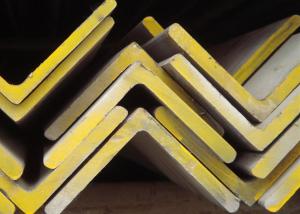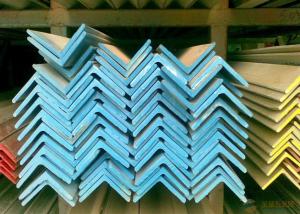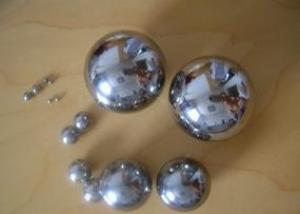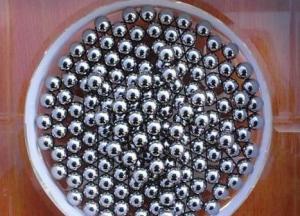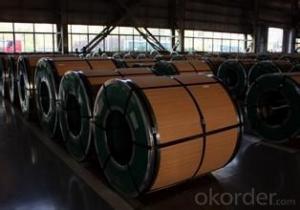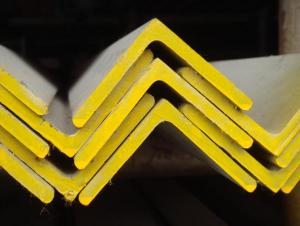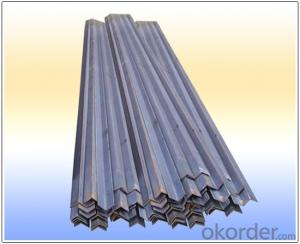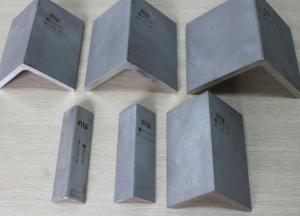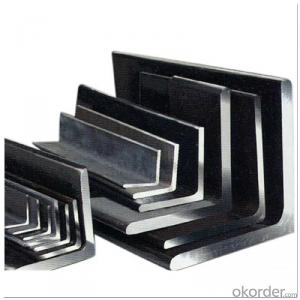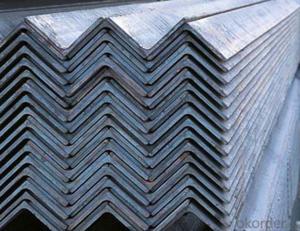Best Quality for 304 Stainless Steel Angles
- Loading Port:
- China Main Port
- Payment Terms:
- TT or LC
- Min Order Qty:
- 1 Ton m.t.
- Supply Capability:
- 500 Tons Per Month m.t./month
OKorder Service Pledge
OKorder Financial Service
You Might Also Like
Stainless Steel Angles
General Information of Stainless Steel Angles
1. Grade: SS200, 300,400 series
2. Size: 25×25×3 mm-100×100×10mm
3. Process: HRAP
4. Length: 2-6m
5. Shape: Equal
6. Delivery: within 20 days
7. MOQ: 1 ton
8. Certificate: ISO 9001:2008, SGS
9. Package: Standard Export Packing, or put into wooden boxes according to your requirement
10. Application: Construction, Marine, Industry and so on.
Specification of Stainless Steel Angles
Name | Stainless Steel Angles | |||||
Standard | ASTM A554, A312, A249, A269 and A270 | |||||
Material Grade | 304,316,201,202, 316L,430 | |||||
Length | 6m or as customers' request | |||||
Tolerance | a) Thickness: +/-0. 15mm | |||||
b) Length: +/-4. 5mm - 0mm | ||||||
Surface | 180G, 320G, 400G Satin / Hairline(Matt Finish, Brush, Dull Finish) 400G, 500G, 600G or 800G Mirror finish | |||||
Application | Decoration construction, upholstery, industry instruments | |||||
Test | Squash test, Extended test, Water pressure test, Crystal rot test, Heat treatment, NDT | |||||
Chemical Composition of Material | Composition Material | 201 | 202 | 304 | 316 | 430 |
C | ≤0.15 | ≤0.15 | ≤0.08 | ≤0.08 | ≤0.12 | |
Si | ≤1.00 | ≤1.00 | ≤1.00 | ≤1.00 | ≤1.00 | |
Mn | 5.5-7.5 | 7.5-10 | ≤2.00 | ≤2.00 | ≤1.00 | |
P | ≤0.06 | ≤0.06 | ≤0.045 | ≤0.045 | ≤0.040 | |
S | ≤0.03 | ≤0.03 | ≤0.030 | ≤0.030 | ≤0.030 | |
Cr | 16-18 | 17-19 | 18-20 | 16-18 | 16-18 | |
Ni | 3.5-5.5 | 4-6 | 8-10.5 | 10-14 | ||
Mo | 2.0-3.0 | |||||
Mechanical Property | Material Item | 201 | 202 | 304 | 316 | |
Tensile Strength | ≥535 | ≥520 | ≥520 | ≥520 | ||
Yield Strength | ≥245 | ≥205 | ≥205 | ≥205 | ||
Extension | ≥30% | ≥30% | ≥35% | ≥35% | ||
Hardness (HV) | <253 | <253 | <200 | <200 | ||
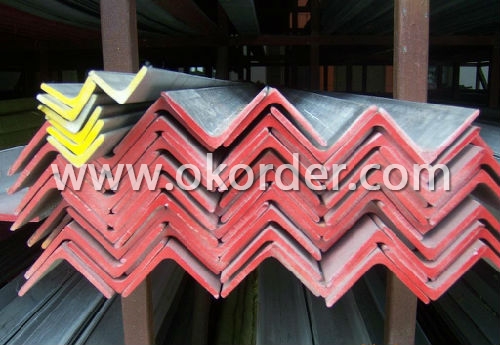
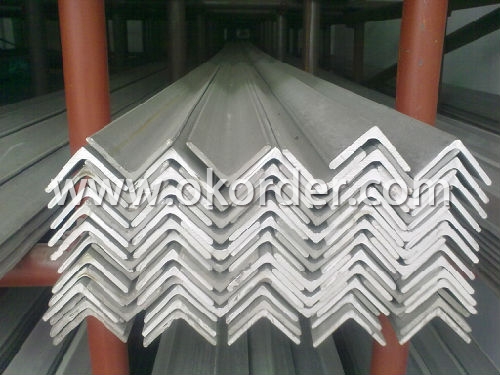
- Q:Are stainless steel angles suitable for the production of shelving systems?
- Indeed, stainless steel angles prove to be a fitting choice for the fabrication of shelving systems. Renowned for its durability and resistance to corrosion, stainless steel emerges as an optimal material for deployment in shelving systems that might come into contact with moisture or endure harsh conditions. By furnishing structural reinforcement, stainless steel angles facilitate the creation of sturdy and secure shelving units through effortless welding or bolting. Moreover, stainless steel boasts a sleek and contemporary aesthetic, rendering it a favored option for both industrial and residential shelving systems.
- Q:How do you calculate the moment of resistance for a stainless steel angle?
- To calculate the moment of resistance for a stainless steel angle, you need to consider the properties of the angle section and the applied loads. The moment of resistance is a measure of the section's ability to resist bending or twisting forces. First, you need to determine the geometrical properties of the stainless steel angle, such as the cross-sectional area, moment of inertia, and the distance from the centroid to the extreme fibers. These properties can be obtained from the manufacturer's specifications or by measuring the angle section directly. Next, you need to determine the maximum allowable stress for the stainless steel material. This value can be obtained from material specifications or design codes. It is important to consider the appropriate stress value based on the type of loading (tension, compression, or bending) and the safety factor required for the application. Once you have the geometrical properties and allowable stress, you can calculate the moment of resistance using the following formula: Moment of Resistance = Allowable Stress x Moment of Inertia / Distance to Extreme Fibers By substituting the values into the formula, you can calculate the moment of resistance for the stainless steel angle. This value represents the maximum bending moment the angle can withstand without failure. It is important to note that this calculation assumes the stainless steel angle behaves elastically and does not take into account any plastic deformation or failure modes. Additionally, if the angle is subjected to combined loading or complex loading conditions, more advanced analysis methods may be required to accurately determine the moment of resistance.
- Q:Can stainless steel angles be used in solar panel installation?
- Yes, stainless steel angles can be used in solar panel installation. Stainless steel is a durable and corrosion-resistant material that can withstand outdoor conditions, making it suitable for supporting and mounting solar panels.
- Q:Can stainless steel angles be machined?
- Yes, stainless steel angles can be machined. Stainless steel is a versatile material that can be easily machined using various machining processes such as milling, drilling, turning, and grinding. However, it is important to note that stainless steel is a hard and tough material, which may require special tools and techniques for machining. Additionally, the presence of chromium in stainless steel can cause work hardening, which further increases the difficulty of machining. Therefore, it is recommended to use appropriate cutting tools, lubricants, and cutting speeds to ensure efficient and accurate machining of stainless steel angles.
- Q:What are the different types of connections for stainless steel angles?
- There are various types of connections for stainless steel angles, including welded connections, bolted connections, and adhesive connections. Welded connections involve joining the angles by fusing the metal surfaces together using heat. Bolted connections involve using bolts, nuts, and washers to secure the angles together. Adhesive connections involve using adhesive materials to bond the surfaces of the angles. Each type of connection has its advantages and disadvantages, depending on the specific application and requirements.
- Q:Are stainless steel angles suitable for the production of street signs?
- Stainless steel angles are indeed a great choice for making street signs. With their durability and resistance to corrosion, they can easily withstand the harshest weather conditions and the wear and tear of outdoor environments. By utilizing stainless steel angles, we can ensure that the street signs are not only robust and steady, but also capable of enduring impacts and remaining in place for an extended period. Furthermore, stainless steel is incredibly effortless to clean and maintain, which is of utmost importance in keeping the street signs visible and legible. All in all, stainless steel angles are an extremely dependable option for producing street signs due to their long-lasting nature, ability to resist corrosion, and minimal maintenance requirements.
- Q:How do you calculate the deflection of a stainless steel angle?
- To calculate the deflection of a stainless steel angle, you need to utilize the principles of structural engineering and apply relevant formulas such as Euler's formula or the equation for beam deflection. These formulas take into account factors such as the material properties of stainless steel, the dimensions of the angle, and the loading conditions. By inputting these variables into the appropriate equations, you can determine the deflection of a stainless steel angle.
- Q:How do you calculate the moment of inertia for a stainless steel angle?
- To calculate the moment of inertia for a stainless steel angle, you need to know the dimensions of the angle section and its axis of rotation. The moment of inertia can be calculated using the standard formula for a beam or section, which involves integrating the area of the cross-section multiplied by the square of the distance from the axis of rotation. The specific formula may vary depending on the shape of the stainless steel angle (e.g., L-shaped, T-shaped), so it is crucial to refer to relevant engineering references or consult a structural engineer for accurate calculations.
- Q:What are the maintenance requirements for stainless steel angles?
- To ensure the longevity and optimal performance of stainless steel angles, regular maintenance is necessary. Here are some key maintenance tips for stainless steel angles: 1. Keep them clean: Regularly clean stainless steel angles to remove any dirt, dust, or debris that may accumulate on the surface. You can use a mild detergent or cleaner along with a soft cloth or sponge. Avoid using abrasive cleaners or scrub brushes as they can scratch the surface. 2. Avoid harsh chemicals: It's important to steer clear of harsh chemicals or cleaners containing chlorine or bleach, as these can corrode the surface and cause damage. Instead, opt for mild, non-abrasive cleaners specifically designed for stainless steel. 3. Remove stains and spots: If stains or spots appear on stainless steel angles, you can remove them by using a mixture of baking soda and water or a stainless steel cleaner. Apply the cleaner to the affected area and gently scrub with a soft cloth or sponge, following the grain of the stainless steel. 4. Prevent scratches: Although stainless steel is highly durable, it can still get scratched, especially when exposed to abrasive materials or rough handling. To prevent scratches, avoid using abrasive cleaning tools and handle stainless steel angles with care. 5. Protect from corrosion: While stainless steel is resistant to corrosion, certain conditions can still lead to corrosion over time. To protect stainless steel angles from corrosion, avoid prolonged exposure to saltwater, acidic or alkaline substances, and high humidity environments. If the angles are installed outdoors, consider applying a protective coating or using a stainless steel grade designed for outdoor use. By adhering to these maintenance requirements, stainless steel angles can maintain their appearance, durability, and performance for many years, ensuring they continue to serve their intended purpose effectively.
- Q:What is the resistance to thermal expansion of stainless steel angles?
- The resistance to thermal expansion of stainless steel angles can vary depending on the specific grade of stainless steel being used. Generally, stainless steel has a low coefficient of thermal expansion, meaning it expands and contracts minimally when exposed to changes in temperature. This property is one of the reasons stainless steel is commonly used in applications where thermal expansion needs to be minimized, such as in construction, aerospace, and automotive industries. However, it is important to note that different grades of stainless steel can have slightly different coefficients of thermal expansion, so it is recommended to consult the specific technical data sheet for the particular stainless steel grade being considered for accurate information on its resistance to thermal expansion.
1. Manufacturer Overview |
|
|---|---|
| Location | Zhejiang, China |
| Year Established | 2010 |
| Annual Output Value | above US$16 million |
| Main Markets | East Asia, Middle East. |
| Company Certifications | |
2. Manufacturer Certificates |
|
|---|---|
| a) Certification Name | |
| Range | |
| Reference | |
| Validity Period | |
3. Manufacturer Capability |
|
|---|---|
| a)Trade Capacity | |
| Nearest Port | Shanghai |
| Export Percentage | |
| No.of Employees in Trade Department | above 10 people |
| Language Spoken: | English, Chinese |
| b)Factory Information | |
| Factory Size: | about 30000 square meter |
| No. of Production Lines | above 7 |
| Contract Manufacturing | OEM Service Offered |
| Product Price Range | Average |
Send your message to us
Best Quality for 304 Stainless Steel Angles
- Loading Port:
- China Main Port
- Payment Terms:
- TT or LC
- Min Order Qty:
- 1 Ton m.t.
- Supply Capability:
- 500 Tons Per Month m.t./month
OKorder Service Pledge
OKorder Financial Service
Similar products
New products
Hot products
Related keywords
